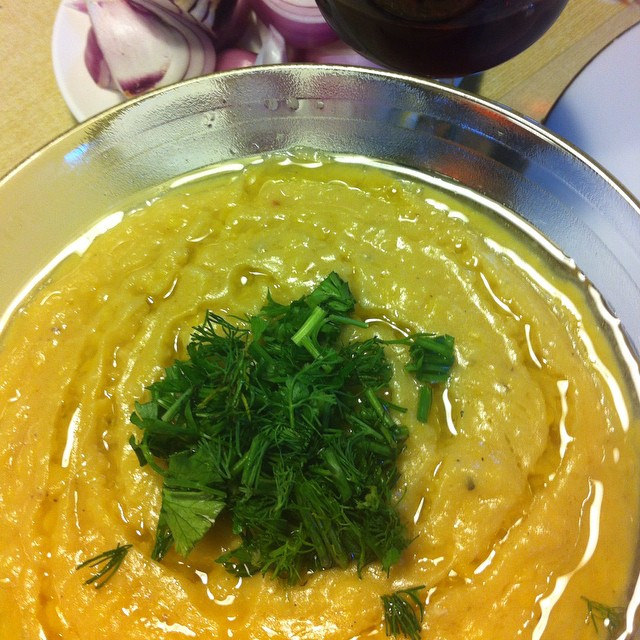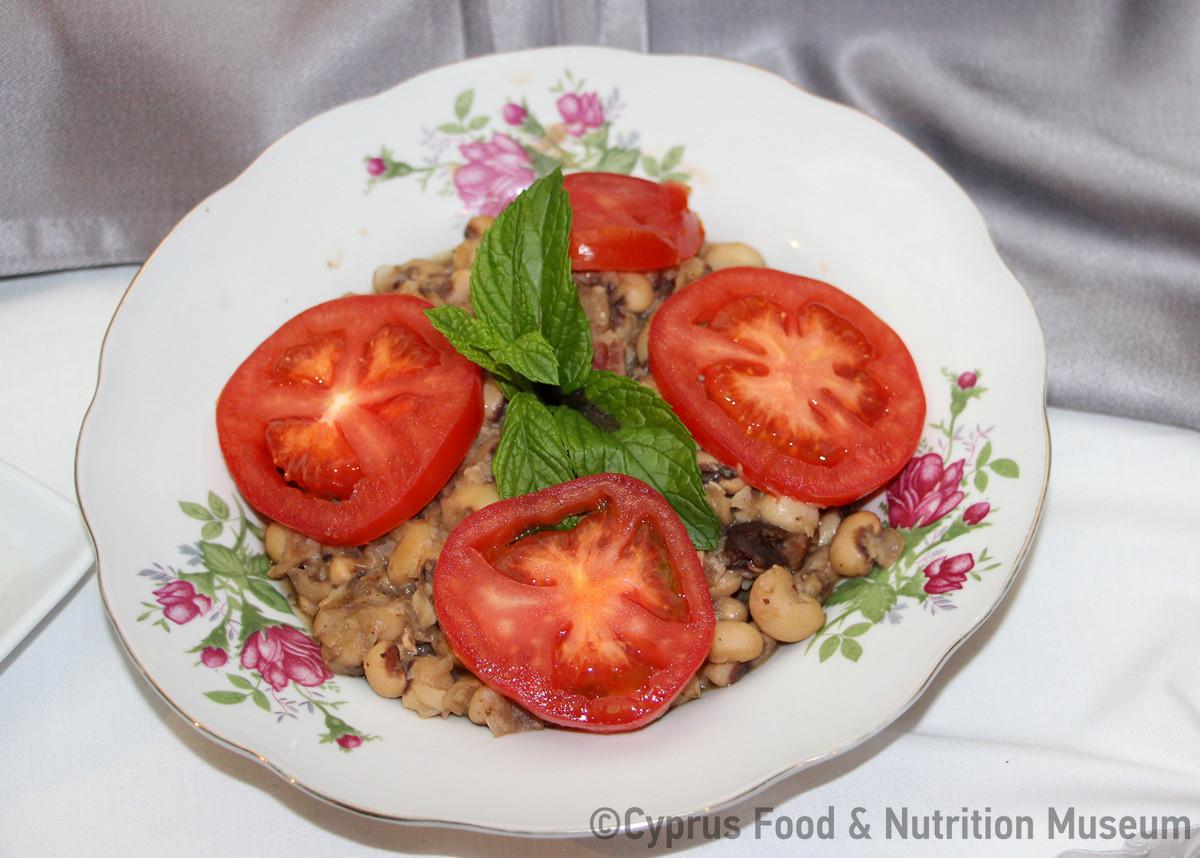Name - Origin
It is the edible lathyrus (Kypri 1983 [2003²], entry λουβάνα,η, 173), which according to Eugenia Petrou-Poeitou is a legume similar to lentils (Petrou-Poeitou 2013, entry Λουβάνα, 78).
Lathouri is a herbaceous plant grown mainly as a forage crop. Its peeled and ground seeds are used to make the fava bean (Babiniotis 2005, entry λαθούρι,το, 985).
Scientific name: Lathyrus ochrus, a species of annual herb in the family Fabaceae.
The name of the plant is used metaphorically to denote boasting: "He came to cut for us a number of louvanes" "I 'm not listening to such louvanes" (Kypri 1983 [2003²], entry λουβάνα,η,173)
also louvanitzis: a boaster, a braggart, one who exaggerates the words or the deeds of others or his own (Kypri 1983 [2003²], entry λουβάνα,η, 173)
The collection of legumes was usually done by women in the early morning hours when it was foggy and there was a south wind. After collecting the legumes, the Cypriots would lay them out on the roof in sunshine and then they would sift them and store them (Ministry of Agriculture 2009, The cultivation of the louvi).
Functional and symbolic role
The tender tips of the plant make an excellent salad (Kypri 1983 [2003²], entry λουβάνα,η, 173).
Louvana was usually accompanied by bread or trin and fried onion (Kypri - Protopapa 2003, 266). Also, during the fasting period, Cypriots used to consume louvana soup. Housewives would boil the louvana in water and then add rice and serve it with lemon juice and olives (Ministry of Agriculture 2010, Cypriot traditional preparations, 11).
Additional information and bibliography
Louvana (Lathyrus ochrus - yprus vetch) is a different species to the traditional fava beans grown on the Aegean islands (Lathyrus clymenum) and to the common lathouri (Lathyrus sativus), which is also used for the preparation of fava. Evidence of cultivation in Greece dates back to the Bronze Age (Valamoti 2011). It seems that today the cultivation of Lathyrus ochre is limited to only a few islands, one of which is Cyprus.
Yangoullis K. G. (2009), Θησαυρός Κυπριακής Διαλέκτου. Ερμηνευτικό, Ετυμολογικό, Φρασεολογικό και Ονοματολογικό Λεξικό της Μεσαιωνικής και Νεότερης Κυπριακής Διαλέκτου, Βιβλιοθήκη Κυπρίων Λαϊκών Ποιητών, 70, Theopress Publications, Nicosia.
Kypri Th. D. (ed.) (1983 [2003²]), Υλικά διά την σύνταξιν ιστορικού λεξικού της κυπριακής διαλέκτου, Μέρος Β΄, Γλωσσάριον Ξενοφώντος Π. Φαρμακίδου, Publications of the Centre for Scientific Research, IX, Nicosia.
Kypri Th. - Protopapa K. A. (2003), Παραδοσιακά ζυμώματα της Κύπρου. Η χρήση και η σημασία τους στην εθιμική ζωή, Publications of the Centre for Scientific Research, XVIII, Nicosia.
Babiniotis G. (2005), Λεξικό της Νέας Ελληνικής Γλώσσας. Με σχόλια για τη σωστή χρήση των λέξεων. Ερμηνευτικό, Ορθογραφικό, Ετυμολογικό, Συνωνύμων-Αντιθέτων, Κυρίων Ονομάτων, Επιστημονικών Όρων, Ακρωνυμίων, Centre for Lexicology, Athens, Greece.
Petrou-Poeitou E. (2013), Από πού κρατάει η σκούφια τους. Λέξεις και ιστορίες από τον κόσμο της γεύσης, Epiphaniou Publications, Nicosia.
Ministry of Agriculture, Natural Resources and Environment, Department of Agriculture (2009), The cultivation of louvi, Press and Information Office, Nicosia.
Ministry of Agriculture, Natural Resources and Environment, Department of Agriculture (2010), Cypriot traditional preparations, Press and Information Office, Nicosia.
Valamoti S. (2011), "Tastes from seeds in prehistoric Greece: seeking continuities and discontinuities in archaeo-botanical data", 1st Symposium of Greek Gastronomy, Karanou-Chania, July 16-17 2011 (www.greekgastronomy.wordpress.com).
Stalo Lazarou, Antonia Matala, Demetra Dimitriou, Argyro Xenophontos, Tonia Ioakim


